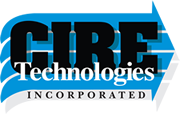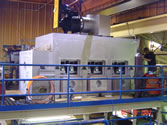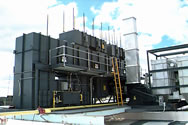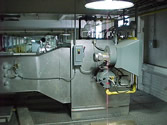Dryer Design Characteristics that Affect Dryer Heat Transfer Coefficients
Good dryer design requires the designer to weigh the three factors that go into the quantity of heat transferred to the product with the rate that the product can accept the drying force without adversely affecting the product characteristics. The three factors are seen in the fundamental equation of forced convection heat transfer defined in an earlier paper.
q=H•A•(TA-TS)
Because TS for a given product, the temperature of the web during the evaporation phase, is the same regardless of the dryer configuration we see that the quantity of heat transfer is affected by the heat transfer coefficient, H, the drying area of the dryer, A, and the temperature of the supply air, TA. For each product dried there are limitations on the supply air temperature and rate of heat transfer, H, that can be applied without harming the finished product. These can be determined by experimentation or experience.
After you determine the heat transfer coefficient that you need to dry the product without adversely affecting its properties you will need to design the dryer configuration to meet that H value. There are five variables that go into the impingement dryer design that impact the resulting heat transfer capability of the dryer. Depending on the design of the dryer most of these will be fixed by the dryer design, typically three. Good design weighs these variables and their trade-offs to yield the most efficient system, thus minimizing operating cost. The design variables are:
- Nozzle spacing in the direction of web movement.
- The width of the nozzle opening.
- The throw distance between the nozzle and the web.
- The velocity of air leaving the nozzle.
- The supply air temperature.
The temperature of the supply air has a small effect on the heat transfer coefficient with lower temperature dryers yielding higher heat transfer coefficients than high temperature dryers, with all other variables equal...




